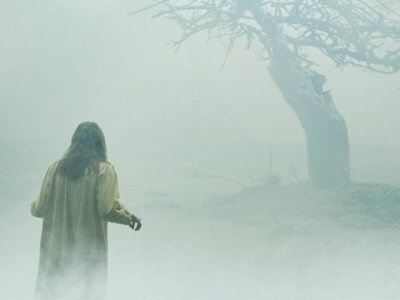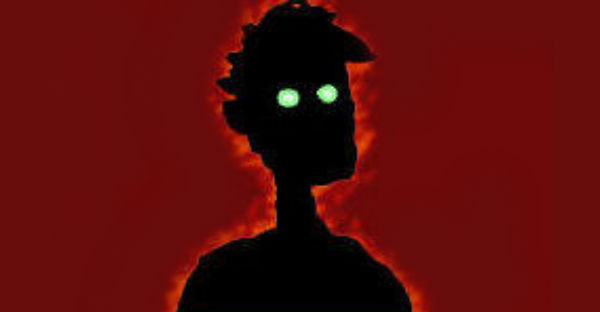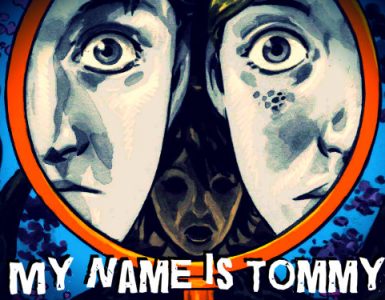The true story behind “The Exorcism of Emily Rose,” involves a young German girl named Anneliese Michel.

The first person to recognize that Anneliese Michel was possessed by demons was an older woman accompanying the girl on a pilgrimage. She noticed that Anneliese would not walk past a certain image of Jesus, refused to drink water from a holy spring and smelled bad — hellishly bad. An exorcist in a nearby town examined Michel and returned a diagnosis of demonic possession. The bishop issued permission to perform the rite of exorcism according to the Roman ritual of 1614.
Half a year and 67 rites of exorcism later, Anneliese Michel was dead at 23.
Anneliese Michel did not die in the Middle Ages, but in 1976, in the small town of Klingenberg, in the heart of one of the most civilized and advanced countries in Europe: Germany.
Two years after Michel’s death, a German court found her parents and the two priests involved guilty of negligent manslaughter and sentenced them to six months in prison, suspended with three years’ probation.
What shocked Germany most was the fact that it could happen in a country that prides itself on being highly rational — and highly secularized.
“The surprising thing was that the people connected to Michel were all completely convinced that she had really been possessed,” says Franz Barthel, amazement still in his voice three decades after he covered the story for the regional daily paper Main-Post.
“Many years later, I visited the woman who first diagnosed the Devil,” Barthel says. “She blessed my microphone with holy water because I was working for the radio then, and it was likely that the Devil was in control of the microphone.”
Michel was raised in a strict Catholic family in Bavaria, which rejected the reforms of Vatican II and flirted with religious fringe groups. While other kids her age were rebelling against authority and experimenting with sex, she tried to atone for the sins of wayward priests and drug addicts by sleeping on a bare floor in the middle of winter.
According to court findings, she experienced her first epileptic attack in 1969, and by 1973 was suffering from depression and considering suicide. Soon she was seeing the faces of demons on the people and things around her, and voices told her she was damned.
Under the influence of her demons, Michel ripped the clothes off her body, compulsively performed up to 400 squats a day, crawled under a table and barked like a dog for two days, ate spiders and coal, bit the head off a dead bird and licked her own urine from the floor.
By 1975 Michel was asking for an exorcism. The Revs. Ernst Alt and Arnold Renz performed the rite 67 times over the first half of 1976. Some of the sessions took up to four hours. Forty-two sessions were recorded on tape.
Michel’s recorded voice can still send shivers up your spine. It is the voice of a demon, growling, barking, inhuman — and surprisingly like the voice of Linda Blair in “The Exorcist,” which had been released in Germany two years earlier.
Sometimes the demons identified themselves — as Cain, Nero, Judas, Lucifer, Hitler and others — and even answered the exorcists’ questions, explaining what was wrong with the church or why they were in Hell. “People are stupid as pigs,” spat Hitler. “They think it’s all over after death. It goes on.” Judas said Hitler was nothing but a “big mouth” and had “no real say” in Hell.
Anyway, it wasn’t the exorcism that killed Anneliese Michel.
At some point she began talking increasingly about dying to atone for the wayward youth of the day and the apostate priests of the modern church, and refused to eat. Though she had received treatment for epilepsy, by this time, at her own request, doctors were no longer being consulted.
She, her parents and the exorcists decided to rely completely on exorcism. By the time Michel died of starvation, she weighed only 68 pounds.
After her death, the Anneliese Michel trial also set reason against faith.
“I personally believe that this case was handled in such a way as to play down the reality of the Devil,” says Norbert Baumert, Jesuit priest and chairman of the theological commission of the Catholic Charismatic Renewal in Germany, which cannot perform exorcism but practices “prayers for deliverance” from “demonic nuisance.”
The trial went to the heart of faith: If the Bible is true, then the miracles must have really happened, and Satan must be real.
But it’s not easy preaching the existence of the Devil to one of the most secularized countries in Europe. A study by research institute Infratest and published in the German newsweekly Der Spiegel last month showed that even among churchgoers, approximately a third of baptized Catholics and half of baptized Protestants do not believe in life after death.
“I understand the complaint that German theologians are too rational,” says Klemens Richter, professor for liturgical science in Muenster. “But exorcism is all about helping the sick. In Anneliese Michel’s case, the sickness was supported. When I go to a patient and support her in her delusion, she gets the impression that she really is possessed.”
Exorcism is far more widespread today than most people imagine. According to Richter, there are about 70 practicing exorcists in France and just as many employed in Italy. In July this year, a congress in Poland was reportedly attended by about 350 practicing exorcists.
Germany is the major European exception. Here, there are only two or three practicing exorcists, and though they have the approval of their bishops, they operate in secret.
Secularization has the church in its grip,” says Ulrich Niemann, a Jesuit priest, medical doctor and psychiatrist who often has been called into exorcism cases by clergymen. “We do a lot for the Third World, but little for faith in a transcendent God. . . . The German church is far too cerebral.”
Niemann doesn’t consider himself an exorcist and doesn’t perform the Roman ritual of 1614. “As a doctor, I say there is no such thing as possession,” he says. “In my view, these patients are mentally ill. I pray with them, but that alone doesn’t help. You have to deal with them as a psychiatrist. But at the same time, when the patient comes from Eastern Europe and believes that he’s been impaired by evil, it would be a mistake to ignore his belief system.”
After the Michel trial, German bishops and theologians formed a commission to review the exorcism rite, and in 1984 they petitioned Rome to change it.
The heart of the problem, they found, was the practice of speaking directly or “imperatively” to the Devil, that is, “I command thee, unclean spirit . . . ” That part of the rite seemed to do the most damage, since it confirmed to the patient that he or she truly was possessed.
The Germans didn’t get what they wanted.
“We were astonished when Rome issued a changed exorcism formula in 1999 which left open the possibility of speaking to the Devil directly,” says Richter. “But you can’t know for certain that a patient is truly possessed of the Devil.”
Today, 30 years after Michel’s death, with both exorcists and her father also dead (her mother couldn’t be reached for this article), Michel is still revered by small groups of Catholics who believe she atoned for wayward priests and sinful youth, and honor her as an unofficial saint.
“Buses, often from Holland, I think, still come to Anneliese’s grave,” Barthel says. “The grave is a gathering point for religious outsiders. They write notes with requests and thanks for her help, and leave them on the grave. They pray, sing and travel on.”







Its JUST biography not scary 😶
oh never mind
7.5/10
Too long to read….
I didn’t finish the story because it was too boring and too hard to understand, so I’ll just watch the movie instead.
Me 2 @Paradise I also watched d movie….. It was really very creepy…..I slept with my mom that day cause I was 2 scared to sleep in my room…….
I have seen the movie .it was sooo scary:O